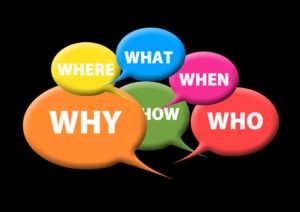
Zorba the Geek
In a recent coaching conversation, a client mentioned that he always feels like he is second guessing his actions. He wondered why he was getting the sense that his messages aren’t getting across. I asked him for an example and he talked about not getting the expected responses or results when he assigns tasks to his direct reports. He was having challenges influencing his team.
The skill of influencing others is a valuable asset to have. It can help us sell products and ideas, convince people and institutions to assist us, and even affect change in the world! We may not have the power to control other people, but we can always do our best to persuade them. This skill is particularly critical for managers. How you go about influencing and successfully communicating your message determines the results you will achieve.
To be a successful influencer, some critical skills to possess include the ability to see “the other side,” build bridges, and give in without giving up.
You must be able to “enter another person’s world” in order to influence them. This means setting aside your own point of view, and looking at a situation from that person’s perspective. How they see the world becomes their reality. Don’t assume that what’s clear to you is clear to your partner in communication.
Seeing the other side involves knowing what is important to the other person: their values, interests, and preferences. Do you understand their SOCIAL STYLE — their preferred way of communicating and behaving? Ask questions and ask for feedback to make sure you “hear” them and understand where they are coming from. Another way to approach this is to answer this question, on their behalf, “what’s in it for me?”
The second critical skill that can help you in working to influence a situation is bridge building.
Bridge building is the process of improving rapport and affinity between people. It can involve putting the other person at ease in conversation with you, gaining their trust, and identifying common interests.
Bridge building is important in persuasion because people are more likely to agree with someone they like, trust, or see as “one of them.” Aside from improving the over-all communication between two parties, bridges can also serve as grounds for negotiation. Bridges translate into common interests, which can be the foundation of a win-win scenario.
Finally, issues are rarely black and white. In most cases, there are areas for compromise. If you want to improve your chances of influencing other people, be willing to make some concessions, even if it’s simply agreeing to differ, agreeing that the other person has a right to their opinion, or agreeing that the other person has made a reasonable argument.
The key to all of the above is understanding and recognizing the others point of view and the only way to do that is to be open, ask lots of open-ended and clarifying questions and to be an active listener.
___________________________________________________________________________________
John Whitehead, coaches individuals and organizations in becoming more effective by helping them improve their interpersonal communications, emotional intelligence and resiliency.
*******Are you wondering if having a Leadership/Personal Development Coach is right for you? Contact John for a complimentary, exploratory coaching session at [email protected]********
If you would like to get notifications for when I post, please go to my blog site and register. I promise I will not spam or use
___________________________________________________________________________________
John Whitehead, coaches individuals and organizations in becoming more effective by helping them improve their interpersonal communications, emotional intelligence and resiliency.
*******Are you wondering if having a Leadership/Personal Development Coach is right for you? Contact John for a complimentary, exploratory coaching session at [email protected]********
If you would like to get notifications for when I post, please go to my blog site and register. I promise I will not spam or use


 Communication is not just about what comes out of our mouths. In fact, what we don’t say — our body language and use of silence — often sends a louder message than the words we use or the intonation of our voice. So being aware of, and practicing, our non-verbal communication skills are critical parts of overall interpersonal communications.
Communication is not just about what comes out of our mouths. In fact, what we don’t say — our body language and use of silence — often sends a louder message than the words we use or the intonation of our voice. So being aware of, and practicing, our non-verbal communication skills are critical parts of overall interpersonal communications. This is the third post in a series focusing on the interpersonal skill of communications
This is the third post in a series focusing on the interpersonal skill of communications
